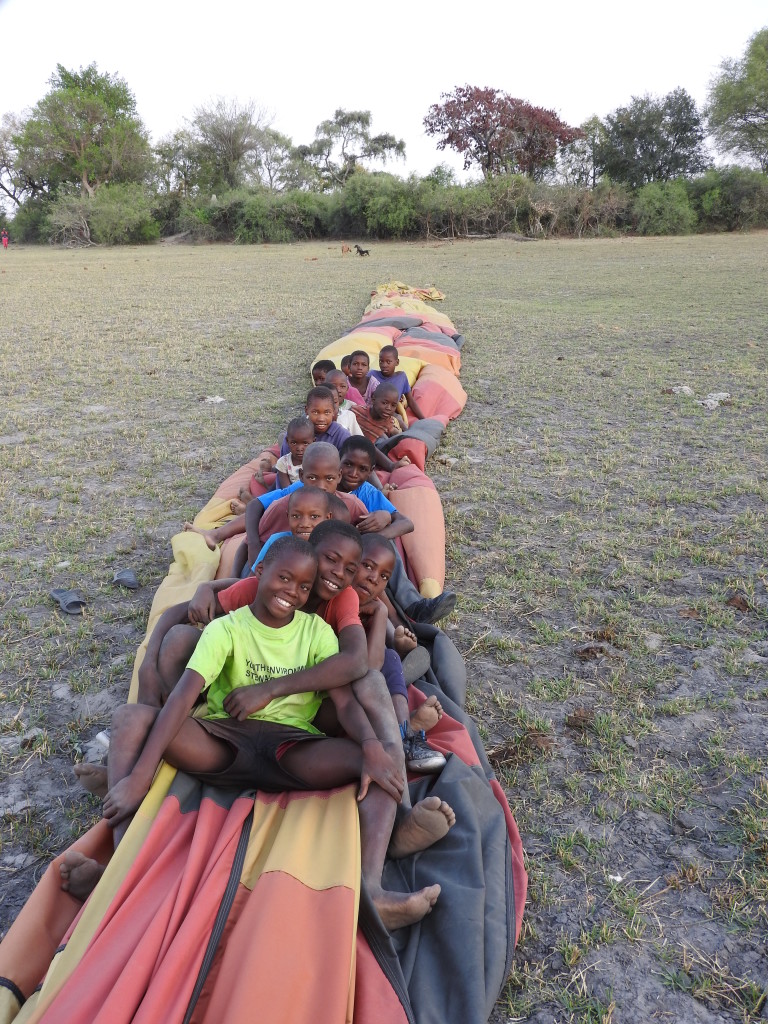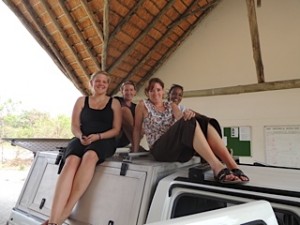Fit for royalty at King’s Pool
Clare and I were among the first to visit the ‘new’ King’s Pool Camp, which has been given a very impressive make-over…!
The new rebuild of King’s Pool is looking fantastic. They have used a lot of earthy colours such as browns, beiges, golds and black, which give a really refreshing feel to be somewhere completely different to the Delta.

From the main area and all the rooms, you have a lovely view over the Linyanti Swamps, teeming with hippos and crocodiles.
One of the special treats of King’s Pool is their very own in-house masseuse, who will spoil you with a massage on the deck of your room overlooking the swamps, for total relaxation in your siesta or after a hard day’s game driving.
The lodge has the advantage of driving along the riverbed in the late afternoons where you don’t have to search for any game, as hordes of different species come down to drink in the heat of the afternoon.
We were lucky enough to watch crocodiles displaying mating behaviour plus see hundreds of elephants, roan and sable antelope among other plains game.
The landscape and habitats are completely different to the Okavango despite the Linyanti Swamps being a Delta system of their own; they are completely separate to the Okavango.
Driving the river’s edge in the afternoon is a completely different experience to driving further back in the mopane woodlands in the early mornings looking for more predators. It gives a complete contrast of habitats.
This area is well known for its large herds of elephants in the dry season: it did not disappoint in that regard as we encountered huge breeding herds.
Another highlight of this camp is the two hides. One is underground in front of the water, meaning you are looking out at ground level up at the gentle giants that dominate this area.

King’s Pool suits first-time safari goers as it is an easy comfortable safari experience. Everything is pretty much thought out for you and not too much energy is required. Those first-time Botswana travellers who have heard about our large elephant populations, but don’t want to do the crowds of Chobe and have the Premier budget, would fit King’s Pool perfectly as they still get the barge on the river and game drives, all in the exclusiveness of a private concession. You have the flexibility of game drives, boating, walks and sitting back in one of the two hides relaxing with a gin and tonic, watching the animals coming down to drink.

The best months to explore this area in a typical year is July to October as the food resources and excess surface water from the rainy season have dried up, pushing the big herds into the Linyanti Swamps area to greener pastures and permanent water sources. In the Green and shoulder seasons, although the big herds will move out, the predators remain because they’re territorial, and the antelope that remain give birth to their young, meaning lots of babies around that make for easy pickings for the lions!
Sanctuary Stanley’s Camp Re-Imagined
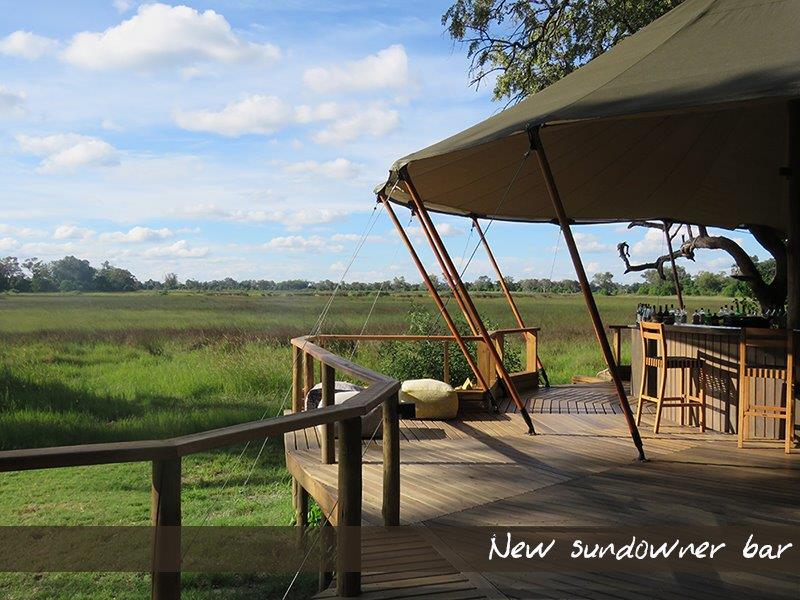 What was your overall impression of the Camp?
What was your overall impression of the Camp?
The newly rebuilt Stanley’s camp is situated in the Southern reaches of the Okavango Delta. With a modern explorers theme, the camp is looking and feeling refreshed, but has still kept the classic safari feel.
In addition to game drives and mokoro excursions (no boating), Stanley’s offers an Elephant interaction, which is one of the most unique experiences in the Delta (at an additional cost). This experience is very educational as you meet and get up close and personal with some of Africa’s biggest giants. You learn about their history, behaviour, biology and some of the human conflict threats these gentle beasts are facing. This is all before going for a walk through the delta “hand in trunk” and sitting and having a delicious bush lunch accompanied by the elephants themselves grazing in the background. Please note it is advisable to pre-book this activity as it is a first come first serve basis, with one activity a day only taking maximum 10 clients at a time. 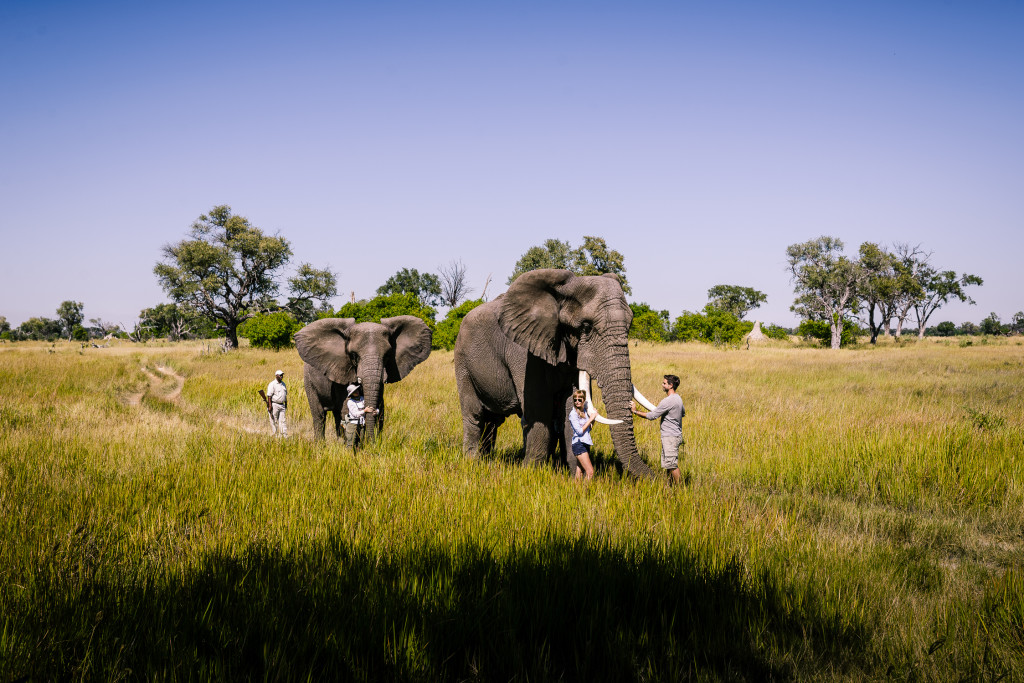
How does the camp compare to similar camps in terms of value and experience?
After the rebuild Stanley’s rates have experienced an increase for 2019. Being situated between the Boro and Santandadibe Rivers, Stanley’s Camp does not guarantee a big game experience but has the unique advantage of being able to offer guests the elephant interaction year round, and the added benefit of being able to offer mokoro excursions during the flood (typically Jun – Sep), creating a varied itinerary on a 2 night stay. The hardware of the camp is brand new and being a Sanctuary Retreats property, it has the edge in terms of service, guiding and the food experience which helps justifying the price increase. 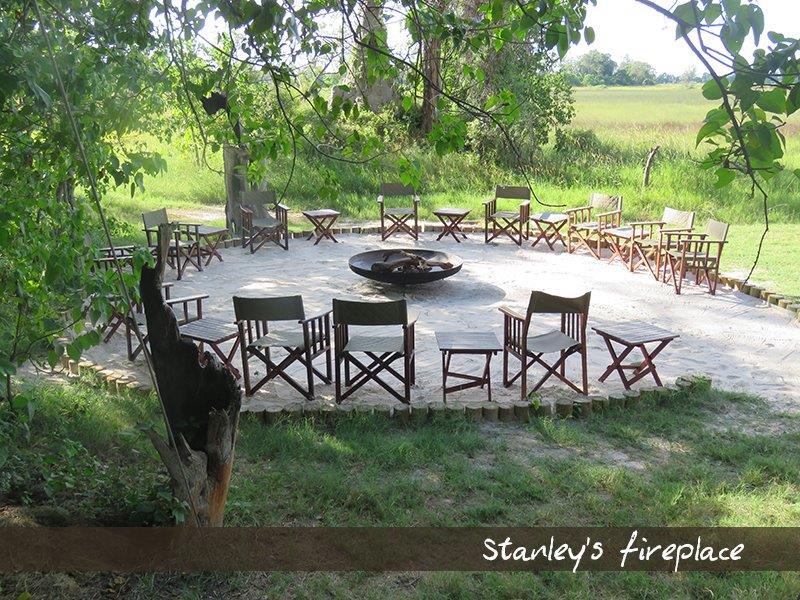
How would you combine this camp in an itinerary and why?
Stanley’s Camp would need to be combined with a stronger game area, that possibly has boating as well, as this activity is missing from Stanley’s. I would mix it with the newly re-built Splash Camp as strong game area, and they can boat all year round
You could combine it with Chief’s Camp as long as you start with Stanley’s, with this combination creating a circuit, you would then start to qualify for Long Stay rates, bringing the overall cost down a fraction.
What type of clients does this camp suit and why?
This camp would suit all sorts of clients across the board. Those wanting up close and unique wildlife experiences, clients that love elephants and are interested in conservation, and just simply those wanting to enjoy the Okavango Delta.
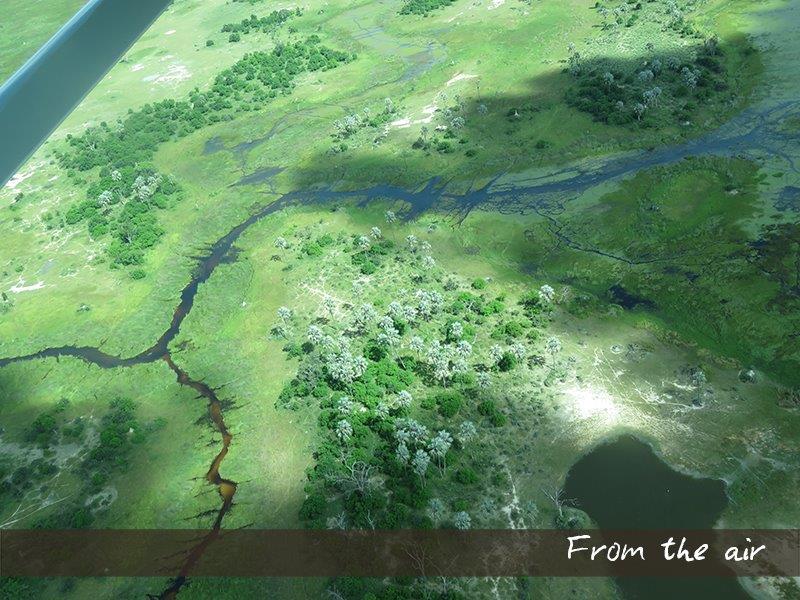
How does the seasonality of the area change through the year and what effect does it have on a visitor’s experience, with specific reference to wildlife and activities?
Situated in the Southern part of the Delta, Stanley’s Camp is greatly affected by the flood water levels.
During the high flood levels, June – August/September time, the water levels are high enough in order for you to enjoy Mokoro. So the mix of land and water activities is offered during the winter months, which offers guests the variety in experience. However, once the water levels start dropping towards September/October time, Mokoro excursions are affected and normally stop. Boating is not offered at Stanley’s Camp.
Although Stanley’s Camp is not renowned for its excellent game viewing, we were lucky to see Lion, Elephant and general plains game. Hyena are known to frequent the area. We did travel at the end of the rainy season and so the grass was still long, making visibility more difficult than during the dry season, when the grass and bush has died down, making spotting game a lot easier.
Are there any areas that could be improved? Are there any issues that could impact guests’ experience that should be highlighted to help manage expectations?
I must say that I was really impressed by the new camp. Having stayed at Stanley’s Camp a few years ago, the rooms are now substantially larger than what they were before, and there is plenty of room for guests to move around. The bathrooms are done well. Spacious and provide enough privacy, should guests be travelling together who don’t know each other very well. Dietaries were catered for and we enjoyed a great 6 course fine dining experience which really enhanced our stay.
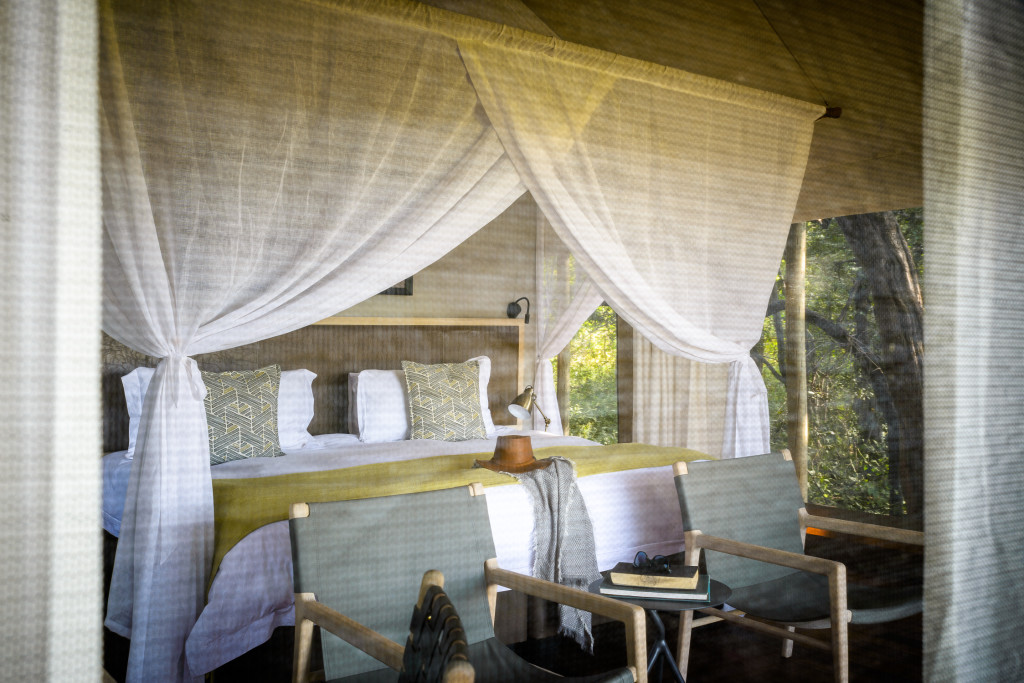
Safari Destinations itineraries showcasing this property:
10N Northern Highlights Superior Safari
Fly, Fly Away…
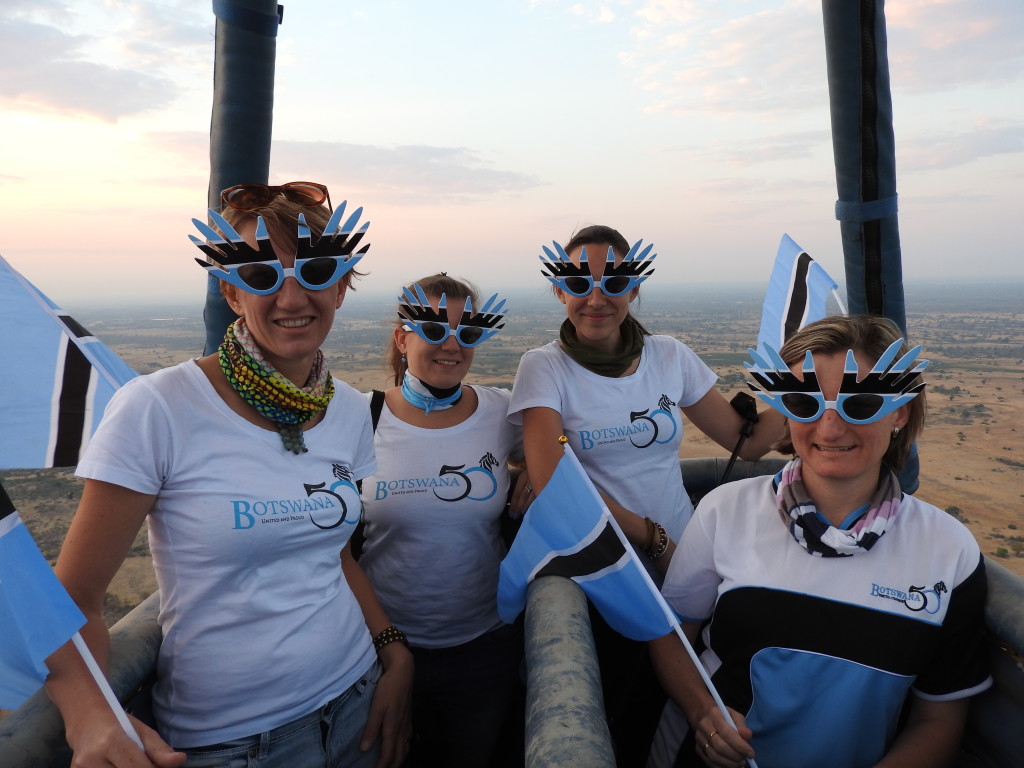
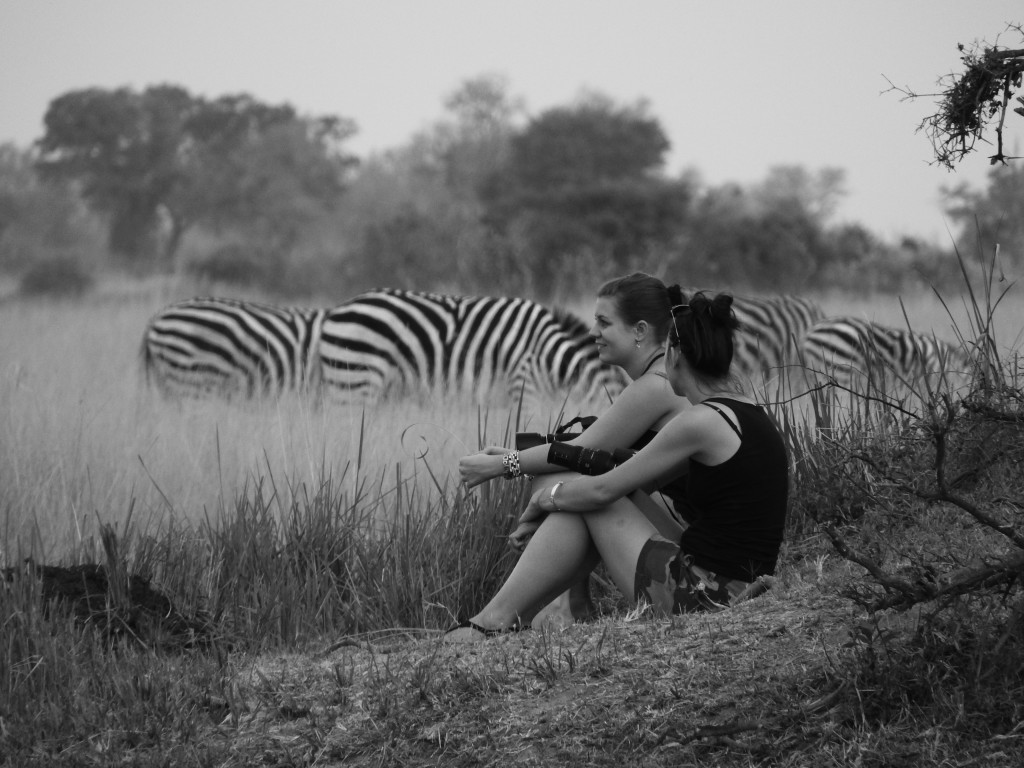
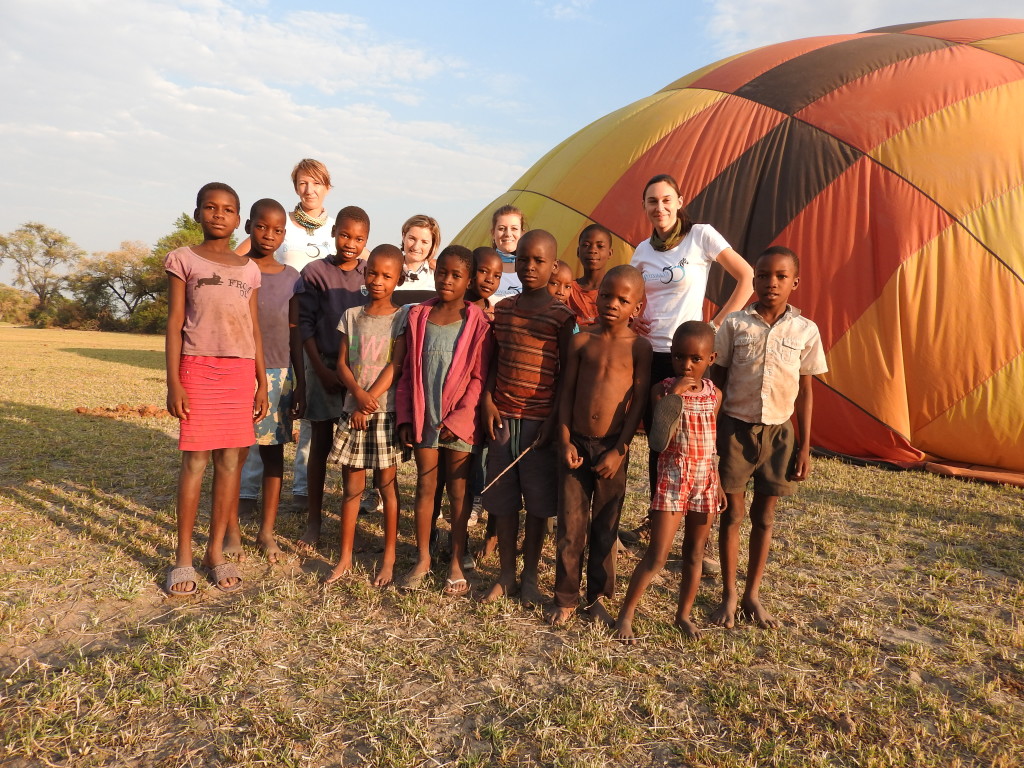
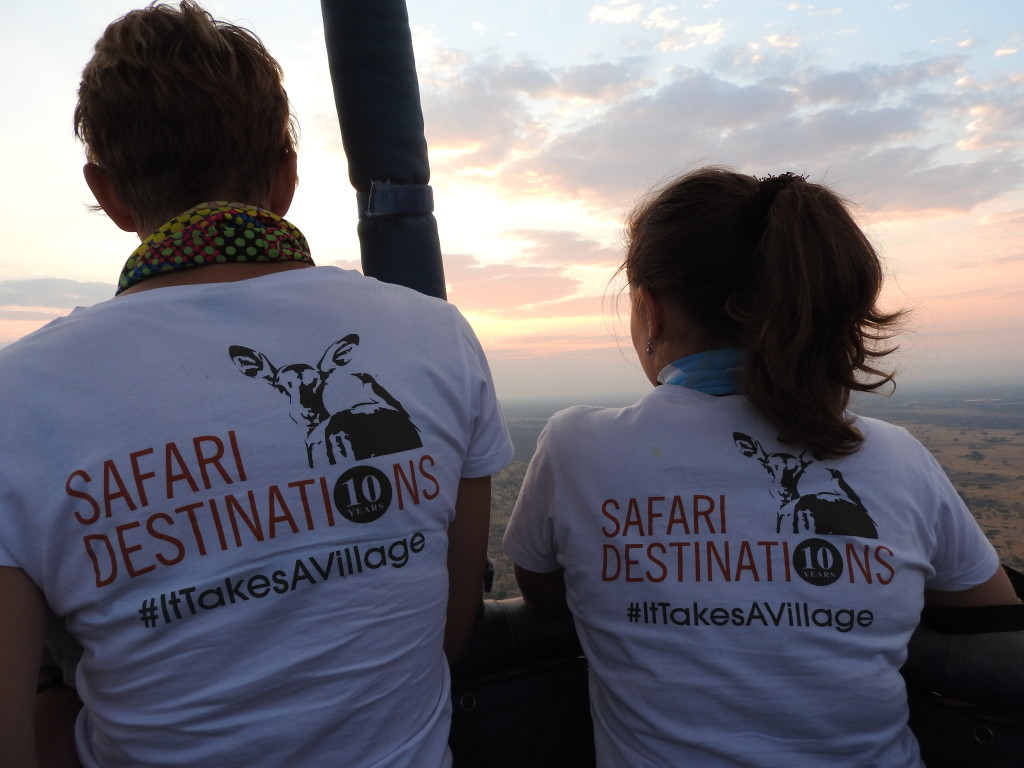
From the Delta to the Desert – on Safari with Ralph Bousfield
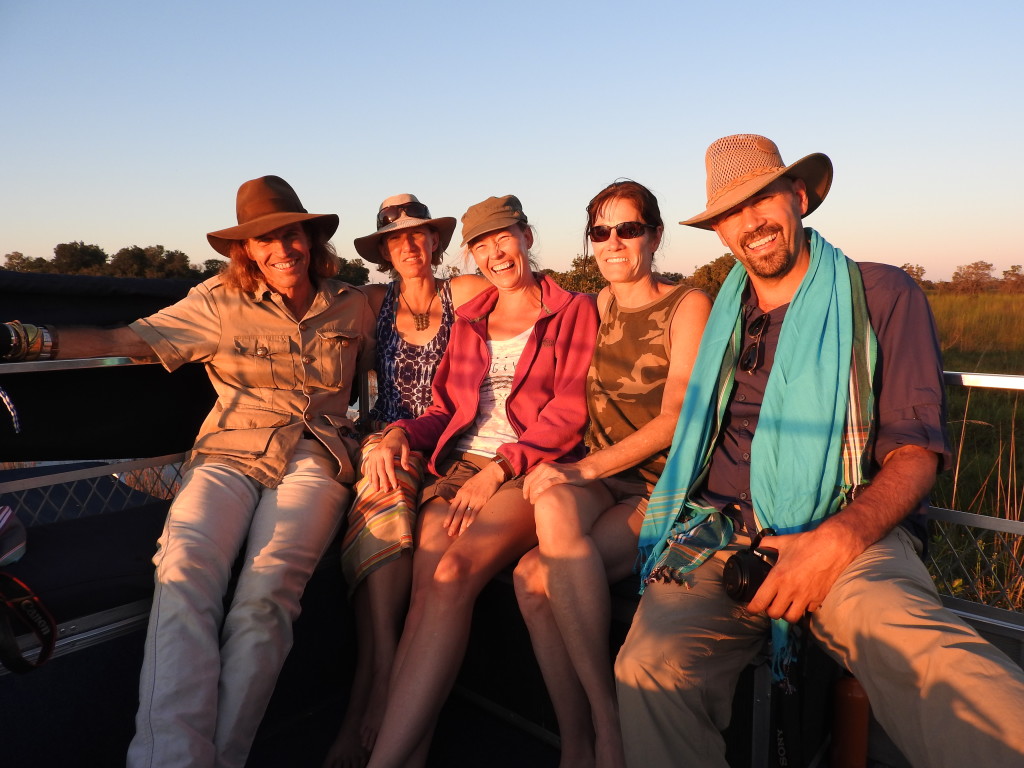 Wow – what a special experience! Recently I was privileged to join a group of agents on an Uncharted Africa educational to Moremi, the Delta and the Salt Pans.
Wow – what a special experience! Recently I was privileged to join a group of agents on an Uncharted Africa educational to Moremi, the Delta and the Salt Pans.
Arriving at our mobile camp set up between 2nd and 3rd bridge in Moremi Game Reserve after dark was like arriving in fairy land, with all the lanterns down the pathways and throughout the camp. Welcomed with a glass of sparkling wine, we were settled in.
This luxury mobile set up boasts a combination of elegance and a kind of exploration history giving you all the comforts of beds, en-suite bathrooms with bucket showers and flush toilets. This was to be our home for the next 2 nights. A mobile safari gives you a private camp feeling much closer to the bush than the infrastructure of any lodge. Lying in bed at night and listening the bush come alive, as certain curious species of game come to inspect the different smells and activities of our camp.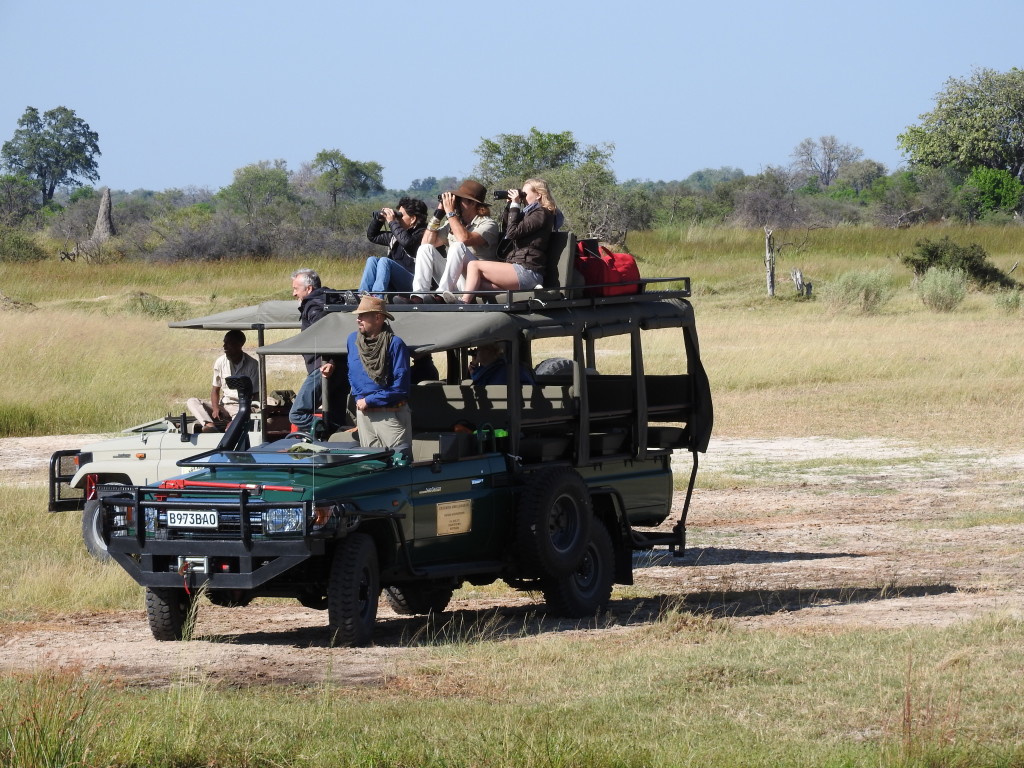
Our Guides, Ralph Bousfield and Greg certainly did not disappoint with their in depth knowledge and passion for the bush and stories of exploration, history, culture and scientific facts kept us all engaged and entertained the entire time we were with them. The other advantage of a mobile safari is creating a trust and a bond with your guide that will be with you throughout your trip.
Day 3 we boated far into the Okavango Delta, to our Island stop where Devon (our Camp Manager) was waiting for us, fly camp set up, with more food and drinks. Our set up was a roll mat with a mosquito net under the vast stars in the middle of the Okavango Delta. It gave us a feeling of being truly in the wild, in one of the most beautiful places on earth. Here we experienced the water ways of the Delta, whilst competing against each other on the number of Sitatunga and Otters we spotted. Nature walks around the island with Ralph proving to Simona we could still make a pizza from natural plants, mushrooms and shrubs on the island as well as curing malaria at the same time.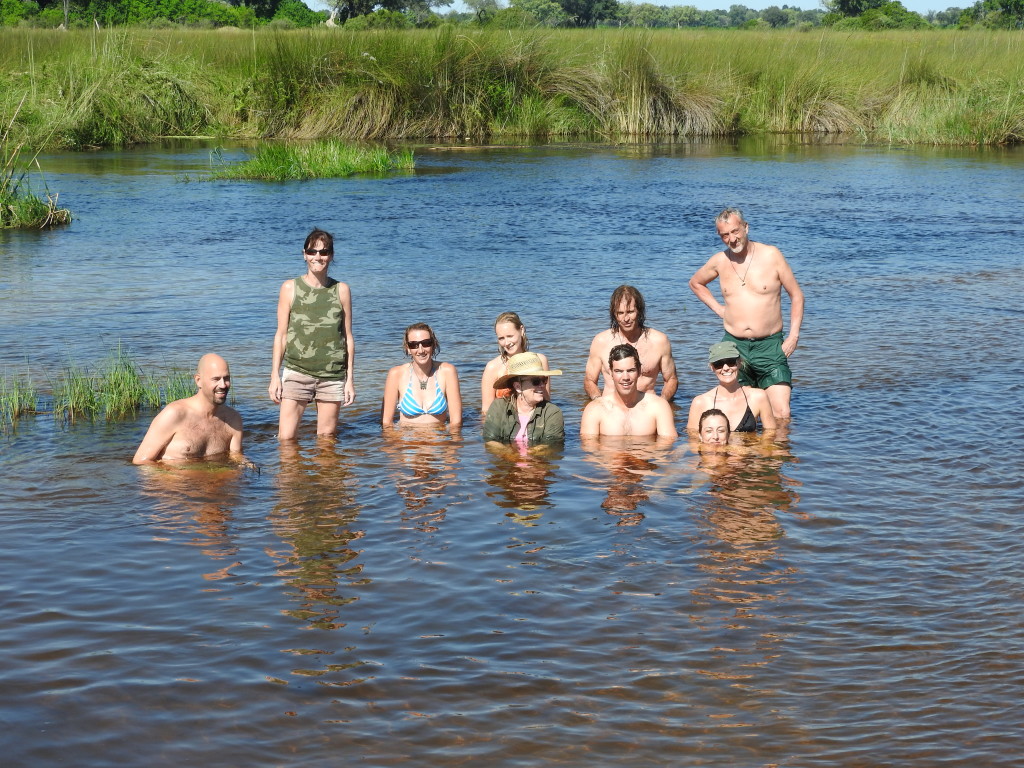
Day 4 our Delta experience was over and we flew out to the openness of the Makgadikgadi Pans. Our home here for 2 nights was in the most feminine of all 3 Uncharted Africa camps, San Camp.
You have a choice of 3 camps all meeting 3 different styles and budgets, whilst you can all enjoy the same activities.
Camp Kalahari situated further back in the grasslands is the least expensive of the 3 camps. It is currently raising all the tents, to allow the breeze to blow through and give you more of a view of the Pans.
San Camp being the lady of the 3, situated on the edge of the pans themselves is seasonal and only operational from April to October. Its white tents on the edge of the pans gives you the true feeling of being on the moon.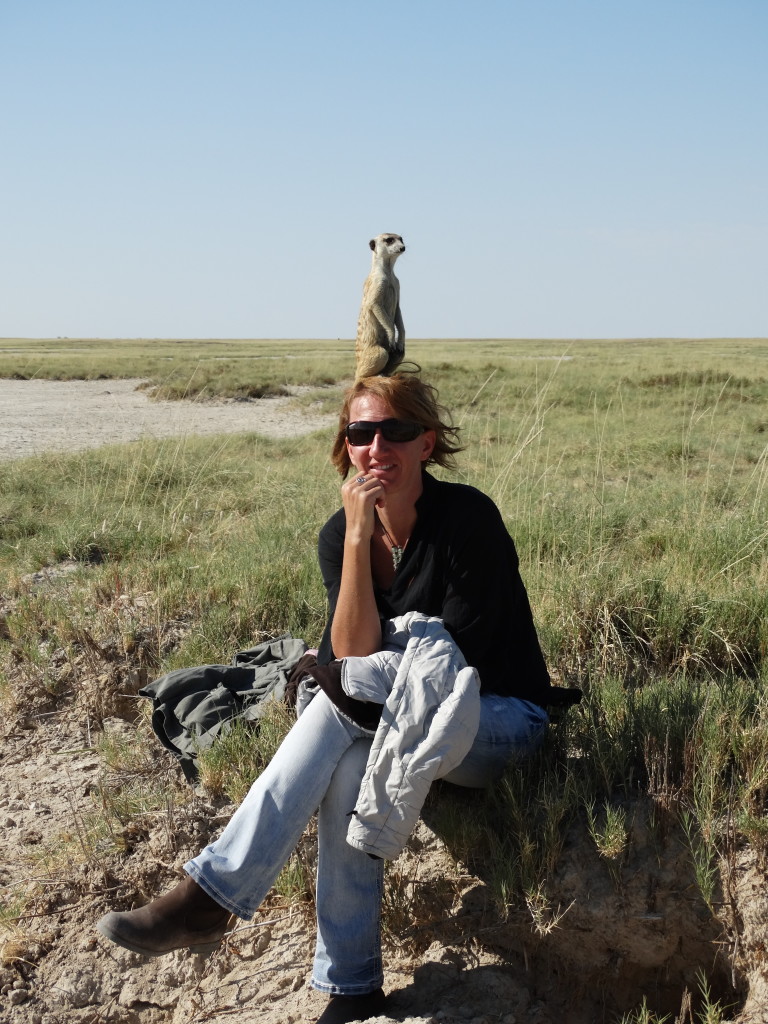
Jacks Camp, this colonial and historic camp based at the edge of the pans but slightly back into the grasslands is the grande-dame of the three. Packed with history and science with their registered museum, it does look fabulous after the completion of its refurbishment.
One thing to mention on the activities, is all 3 camps run the same activities on a rotational cycle so that guests from 2 different camps don’t do the same activity together. This is the reason that a 3 night stay in the dry season is recommended to be offered the surprise sleep out (weather dependant). Activities include a cultural bushman walk, game drives looking for more adapted desert species, quad biking in the dry season, following and interacting with the very comical habituated meerkats, horse riding as an optional extra and watching the sun set where it is so silent that your ears ring.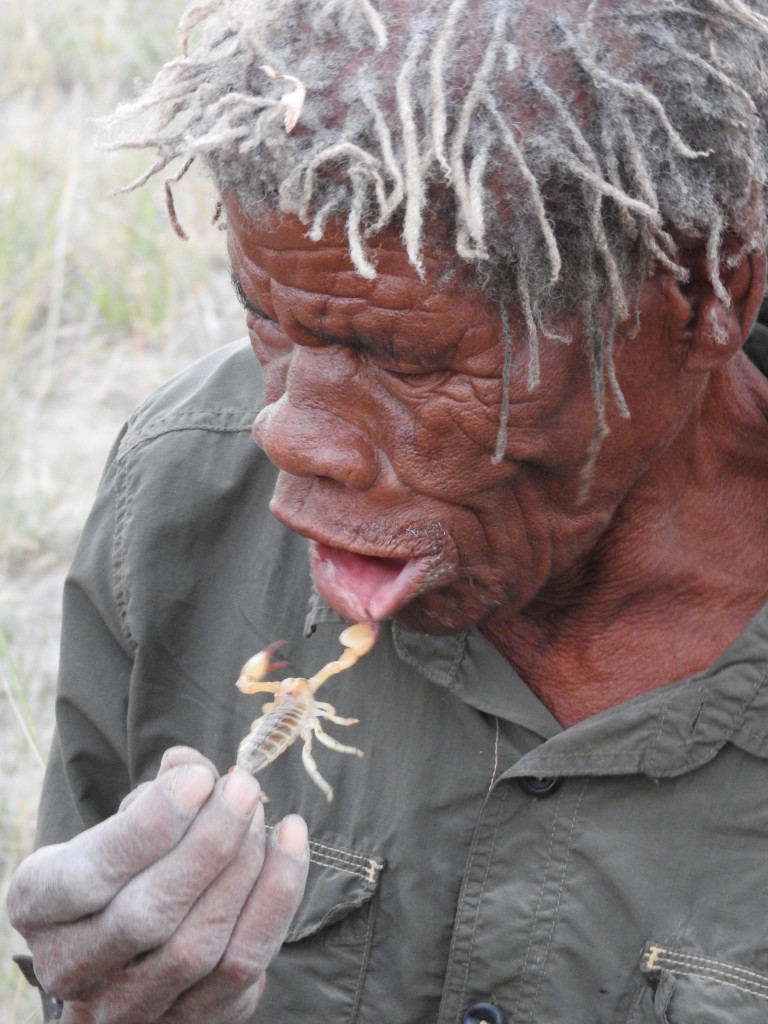
A safari to the Salt Pans is such a unique experience, from the Zebra migration in the Green Season to exploring the pans on quad bikes in the dry season, it should not be missed.
Our Selfdrive Adventure in Khwai and Savuti
Our Selfdrive Trip from Maun to Khwai and Savuti!
Have you ever wondered what it takes to get off the tarmac and explore the sandy tracks of Botswana’s National Parks in a 4×4? We did. With our mission set, four of us Safari Destinations girls, calling ourselves the SD Angels departed Maun early on a Sunday morning for a five day self-drive safari through Moremi, Khwai and Savute.
Leaving Maun, the small village of Shorobe marks the end of the tarmac. From here to the buffalo fence is a big wide stretch of calcrete road where we had our first encounter with someone driving far too fast and almost wiping us out. We quickly discovered slow is the answer, as people generally tend to drive too fast and run into trouble.
From the buffalo fence there are two ways of getting to Khwai. You can either go via Mababe Village, staying on the calcrete road or head through Moremi Game Reserve via South Gate. We decided to go through Moremi as we were in no rush, since the route is more scenic with much better opportunities for spotting wildlife. The road between the buffalo fence and South Gate is quite narrow, passing through mopane forests and very sandy, so the driving is quite a bit slower and we let our tyres down to about 1.6 bar to deal with the terrain.
Once we reached North Gate and exited Moremi Game Reserve, we crossed over a proper bush bridge made from Gum Poles and into Khwai Village. To get here took us approx four hours from Maun, stopping for game sightings on the way. In Khwai, we stayed at both Khwai River Lodge and Khwai Tented Camp, however other options in the area include Sango Safari Camp and Machaba Camp.
For self-drivers, the road network around Khwai is quite disorienting. As a result, it’s best to arrange your game viewing activities with your lodge as the professional guides know the area, where the game is and what signs to look for in tracking animals, resulting in a more enjoyable safari.
Leaving Khwai for Savuti, there are two possible routes. Different people gave us different arguments and opinions on whether we should take the Marsh Road or the Sandridge Road. In the end, we took the Marsh road which is longer but a lot more scenic, traversing the Mababe Depression and the Savute Marsh. There is a lot more wild life on this section of road especially around the Savute Marsh and we saw leopard, cheetah, elephant, wildebeest, giraffe, impala, the list goes on. This road can become flooded in some areas, and very slippery in the rainy season. In October, it took us approximately four hours to drive the Sandridge route.
In Savute, we stayed at both Savute Elephant Camp and Ghoha Hills, however other options include Savuti Safari Lodge, as well as SKL’s Camp Savuti next to the public campsite.
Returning from Savute, we drove back towards Khwai on the Sandridge road, which was a lot quicker with better road conditions. Although quicker, the driving is through a lot of Mopane and we only saw elephant and steenbok driving this way. In the winter months before the rains, this sandy road can get very churned up and a lot of people get stuck. Taking this route back to Maun and skipping Moremi Game Reserve on the return took us approx 5 ½ hours.
To self-drive successfully through the parks, we recommend a good 4 x 4 such as a Land Rover, Toyota Hilux or Landcruiser. It’s essential the car has 4×4 and has good clearance. This driving cannot be done in either a 2WD or a 4WD without the height to manage deep sand and water crossings. For good vehicles carrying the essential equipment as standard and good back-up service in case of emergencies, we recommend Travel Adventures Botswana. Essential items to pack are a high-lift or air jack, two spare tyres, spade, axe, tow-rope, jumper-lead cables, tyre pressure gauge and air compressor. If you don’t have a long-range tank, you will need extra fuel as driving in sand uses a lot more fuel than travelling on tarmac. You should always have plenty of drinking water, basic food supplies, a GPS, satellite phone and a well-stocked first aid kit on hand in case of getting lost, stuck or experiencing break-downs. Of course, you will also need your park entry permits for your vehicle and for yourself, together with any confirmation from lodges you’ll be staying at which confirm they’ve pre-paid park fees on your behalf.
